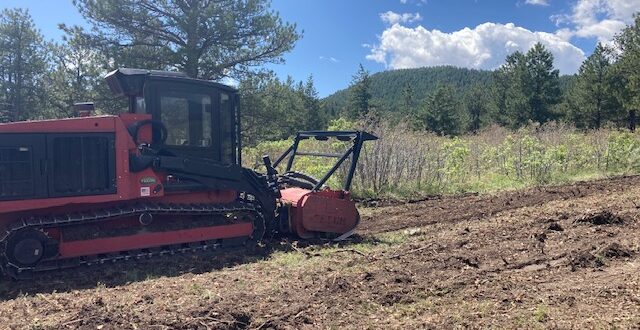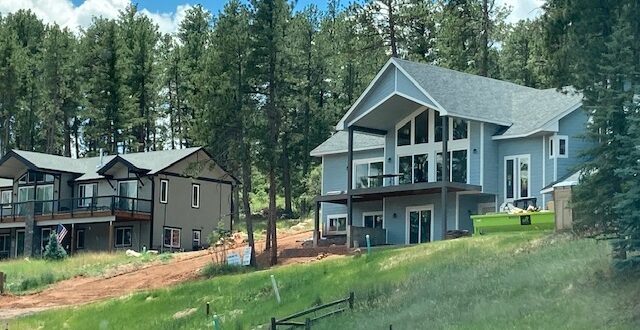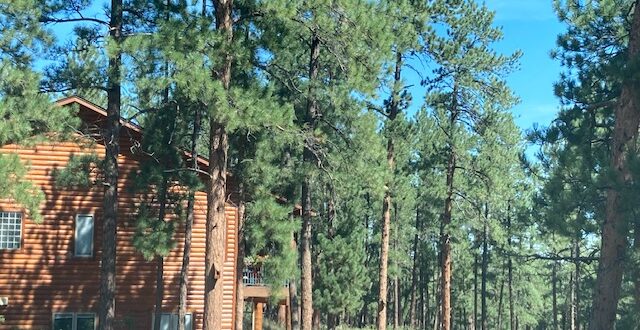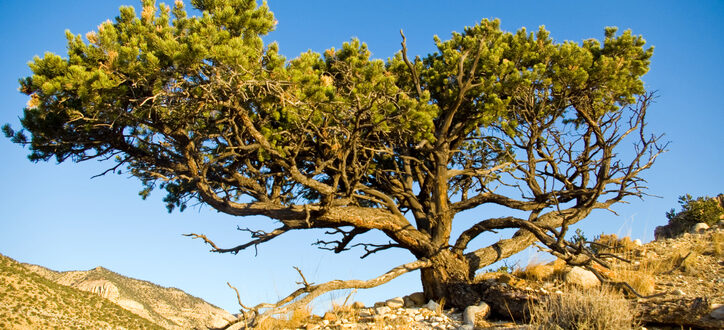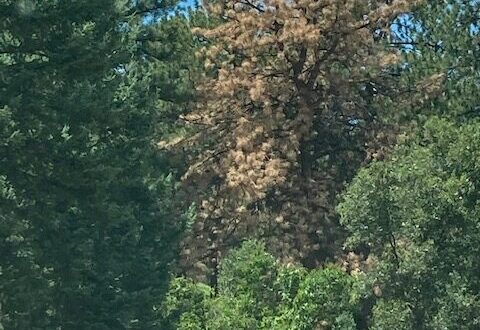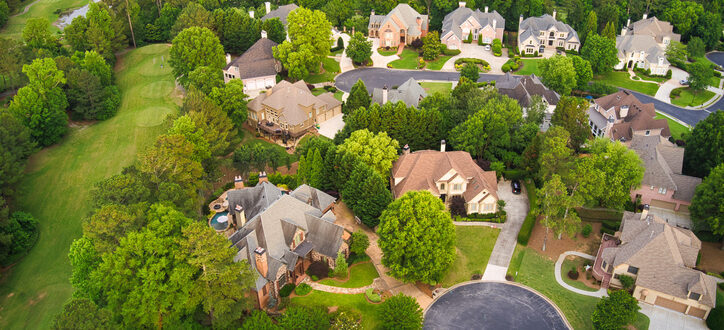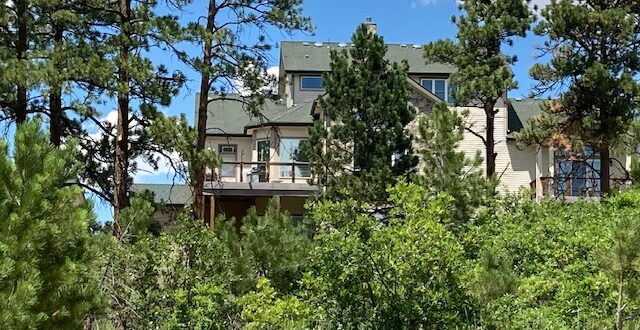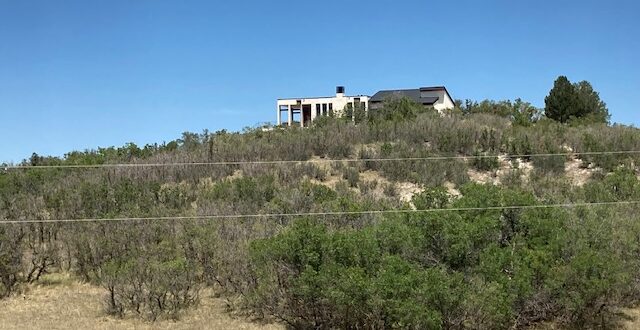Submit an estimate request for a free estimate on creating firebreaks on you property. Fuelbreaks and firebreaks can be created in any zone. You’re likely to see them in Zones 2 and 3, which means there is a lot of work you could potentially do. The great news is these breaks require little effort on your part. Zone 3 is one the most important areas you’ll want to concentrate on. You’ll follow the tips for Zone 2 to create a defensible space to slow down the risk of wildfires. Creating a Shaded Fuelbreak in Zone 3 If your land is more than an acre wide, you’ll fall into Zone 3. This will often have some roads or trails running through,
(719) 400-9104
office@coloradomastication.com
For a free estimate on new home fire mitigation, call (719)400-9104. Whether you’re buying or building a home, you’ll need to consider the risks of wildfires in the area. This isn’t just about current risks, but the wildfires that have happened in the past in the region. Your insurance agent will have a lot of questions if you are in an area that’s considered high-risk for wildfires, and you’ll just want to know details for your own safety. What’s the Response Rate for Firefighters Fires can happen for all sorts of reasons. Some are natural, as wildfires are necessary for the health of some trees and forests. However, many others are due to people or because of faulty wiring. You
For a free quote on fire mitigation in Palmer Lake, Call or text Colorado MAstication at (719)400-9104. There are multiple stages to fire mitigation. Phase 1 is the most important, with around 70% of your effort focused on Zone 1. The remaining 30% of your effort in this phase is going to be on Zone 2. The time this phase actually takes will depend on a number of factors, including the time you have available and the state of the area when you first start. For some people, it will take a weekend, but for others it can take a few weeks due to the state of the property when you initially buy it. There are some tough decisions during
Dwarf mistletoe is an invasive weed that needs tackling right away. The sooner you catch it, the more chance you have of saving the tree as a whole. The benefit is the mistletoe affects branches, so you can cut off the infested branches to save the rest of the tree. How Mistletoe Kills Trees Mistletoe is a parasitic plant. It will steal all the food and water going to the tree. This prevents the trees getting the nutrients going to the tree, leading to them dying. The good news is mistletoe is slow moving unlike beetles. You have time to tackle the infestation without completely losing the trees. The problem is that the weed can end up spreading far away
For thinning of pinyon or juniper woodlands, give Colorado Mastication a call at (719)400-9104. In the Four Corners region of the southwest of Colorado, you’ll see a lot of pinyon pines and juniper trees. You’ll see the pinyon pines around the higher elevations for the most part. Meanwhile, the junipers prefer the lower elevations as they are more tolerant of drought conditions. Before we had to look at ways to supress fires due to the increase in wildfires, there wouldn’t be too many of the trees in one area. Now, we tend to find pinyons and junipers create a closed canopy and the woodlands are becoming denser. This is a problem. Trees Are Taking Over the Areas Low-intensity fires are
For estimate on fire mitigating beetle killed trees, you can reach us at (719)400-9104.3 While wildfires are a risk, they become more of a risk due to pests and disease. Beetle killed trees are a growing concern around Colorado, with bark beetles being the most common pest problem. Bark beetles have been responsible for the death of multiple forest areas. This spread is exponential if not controlled because the beetles don’t care about the trees—they just want a home and food. Drought-stressed trees are most at risk as they don’t have as much pitch, the main defense against beetles. Knowing a Tree Is Affected by Beetles You want to protect a tree as soon as possible. If you’re seeing the
Firescapes are the entire area around your home. This isn’t just about your lot or the lots of your immediate neighbors. You want to look at the entire land form the mountains in the distance to the valley below them.It’s land that is going to burn if fires get out of control. By understanding your firescape, you’ll be able to plan better should the worst happen. How to Create Your Firescape Just how much land do you need to cover? You want to look for your house on the map and draw a circle that is about a mile in radius around it. This is the amount of land that you need to consider to help keep yourself safe. You’ll
For fire mitigation in zone 1,2,3 or 4 on your property in Roxborough park, request estimate from Colorado Mastication at (719)400-9104. If your property covers more than five acres of land, you’ll need to create Zone 4 to protect against wildfires. Don’t worry if you don’t have this space. That land will be the responsibility of any neighbors you have, or it could be the responsibility of the forest service. Zone 4 is the lowest priority of zones out of everything we’ve covered so far. That doesn’t mean you should abandon it, but the first three zones from your home are the most important ones to focus on. Getting Rid of Diseased and Damaged Trees The most important thing here
For questions about fire prevention and mitigation in Zone 3, contact Colorado Mastication at (719)400-9104. While the first two zones are the most important for your house, if you have property boundaries in Zone 3, you need to know how to protect the land. This is likely if you have more than an acre of land. Zone 3 is the wildland. Fires that start away from the home will use Zone 3 as a way to build up intensity. You can control that and slow the fires down. Managing Wildland in Zone 3 In this zone, you’re cutting the tree limbs to between four and six feet from the ground. Preventing the ladder fuel is the best way to slow
Throughout most of the western areas of the United States, especially in the mountain areas, you’ll find the ponderosa pines growing in the lower elevations. They stick between grasslands, and often sit on the north-facing slopes for the moisture and shade. The ponderosa pines will mix in with Douglas firs around the areas, but there are some that are pure ponderosa areas. The areas these two types of trees grow in are problematic when it comes to wildfires. Why Ponderosa Pines Are at Risk of Fire Fires tend to start at the lower elevations. The grasslands offer the perfect fuel sources, and the young ponderosa trees end up dying. They don’t have the thick bark and deep roots that mature
